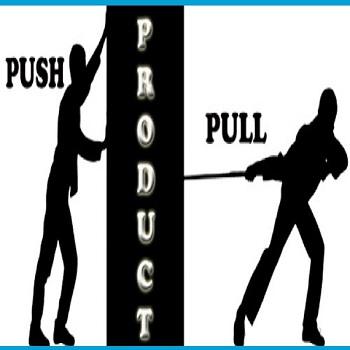Last updated on August 3, 2017
Engaging your customers on a daily basis isn’t easy. We understand your dilemma and this is the reason why lead generation companies are there to rescue you from the pits of downfall. But collaborating with third parties is also considered to be a risky job. Uncertainties can be avoided only through precautions. The aim for businesses is to accelerate growth. Attracting new eyeballs every now and then is important if an organisation wants to promote their brand in an effective manner. Each and every chapter of hacking potential growth is significant, skipping even a single page to read later will manifest loopholes and thus, your opportunities will escape far beyond your reach and will construct an alluring domicile with your competitors.
The 3 P’s for growth hacking is essential, states Neil Patel (the funny marketing guy, who knows you in and out). The push, pull, product tactic is what Mr. Patel focuses on to generate and attract lead. According to Patel nurturing and feeding customers is not an easy work, an organisation has to first evaluate and produce a website which is best if it is attractive, engaging and alluring. Not many customer like to see a boring monochrome website. Your website is the only reason a customer would prefer to glance and stare for a bit longer period of time. You must dangle a carrot to attract your consumers, in fact incentivise them and create a route for them with directions. This is the reason, why good lead generating companies are always down on their keens to court you to the ball room of marketing.
Pull
Probably you are thinking what is ‘pull’ when it comes to lead generation services. A pull strategy is typically about disrupting the content in your website that is being devoured. The basic tactic is to be visible. ‘Pull’ tactics does not involve forceful strategies. You like us you will visit us and ultimately click on the link that you need to get further information.
Push
‘Push’ as the name entails, it is a more intense term rather than pulling. How aggressive can it be? You don’t care. You go grab that customer by the collar and just say, “You have to visit our website.” Instead of luring your consumers, you just go the evil way and push them to your website. Let me give you an example, a few days back there was a new apparel website that recently launched, it followed me everywhere just like a beautiful stalker. From my thesaurus website to opening every blog to read, it just followed me, finally I had to give up and check what exactly was it. Now, it is my girlfriend, I at least check her once in a day. This is what lead generation companies actually do. They stalk you, not just on telephone anymore, but on your text messages, online etc. generally the tactic is to ‘push you,’ push you until you are interested in them.
Product
The third option is no tactics. It is reality. Suppose your organisatioin is providing the most exciting website paying huge amount to increase visibility online but when it comes to your products or may be services you disappeared, just ditched your customers in the blues. As a matter of fact, traffic is generated only through your products. The best your quality is the best is your sale, ultimately leading to high quality leads on your websites.
Concisely speaking, both push and pull strategies are good instances for hacking your growth rate of customers. A lot of virtuous lead generating companies in UK are defining and implementing tactical methods to generate lead in a more efficient way and give you the best customer satisfaction. It is important for such companies to know how to increase customer flow for your website. These practices will surely entice your customers digitally to improve your business growth and guide them for a better and prominent brand image for you and your customers as well.














Be First to Comment